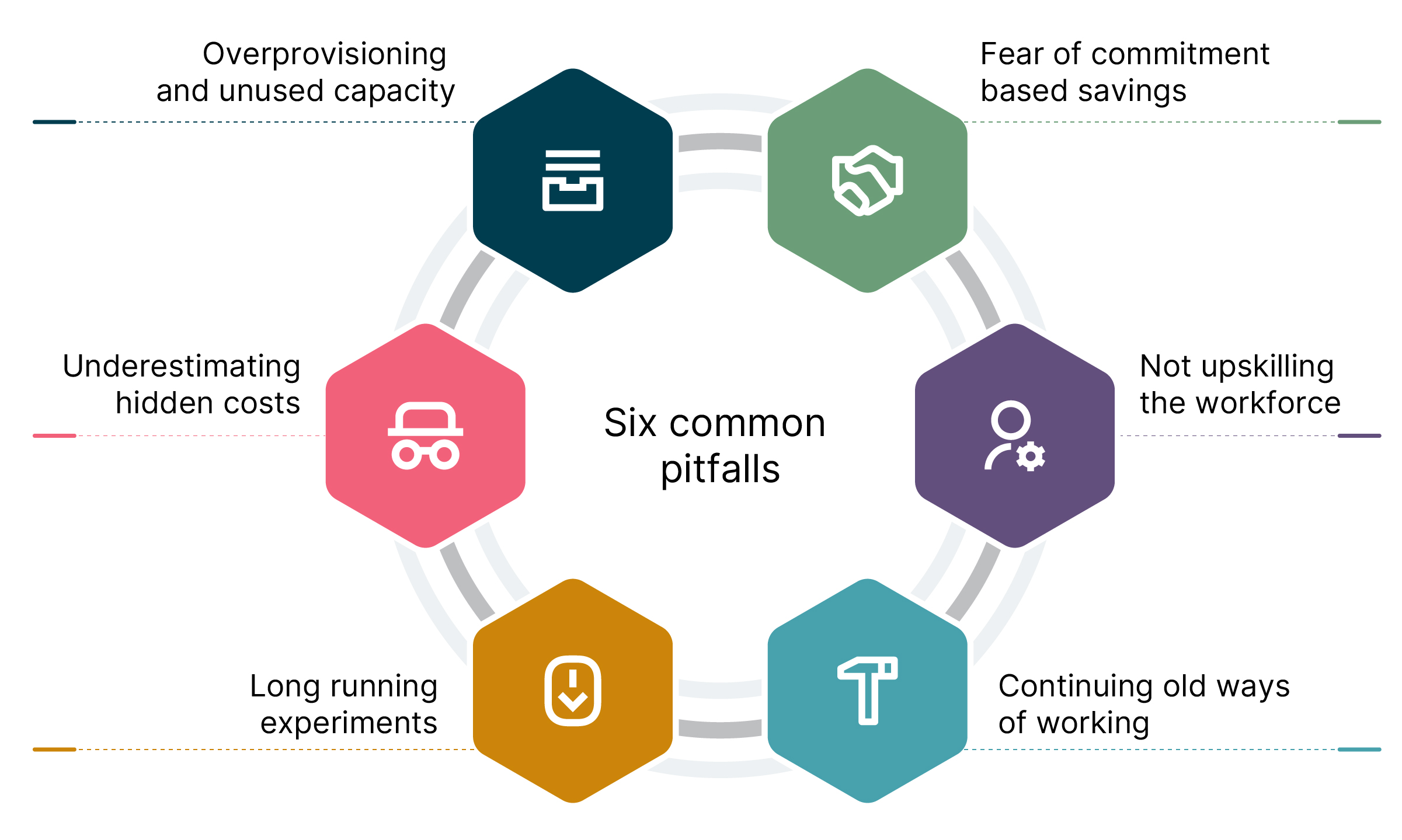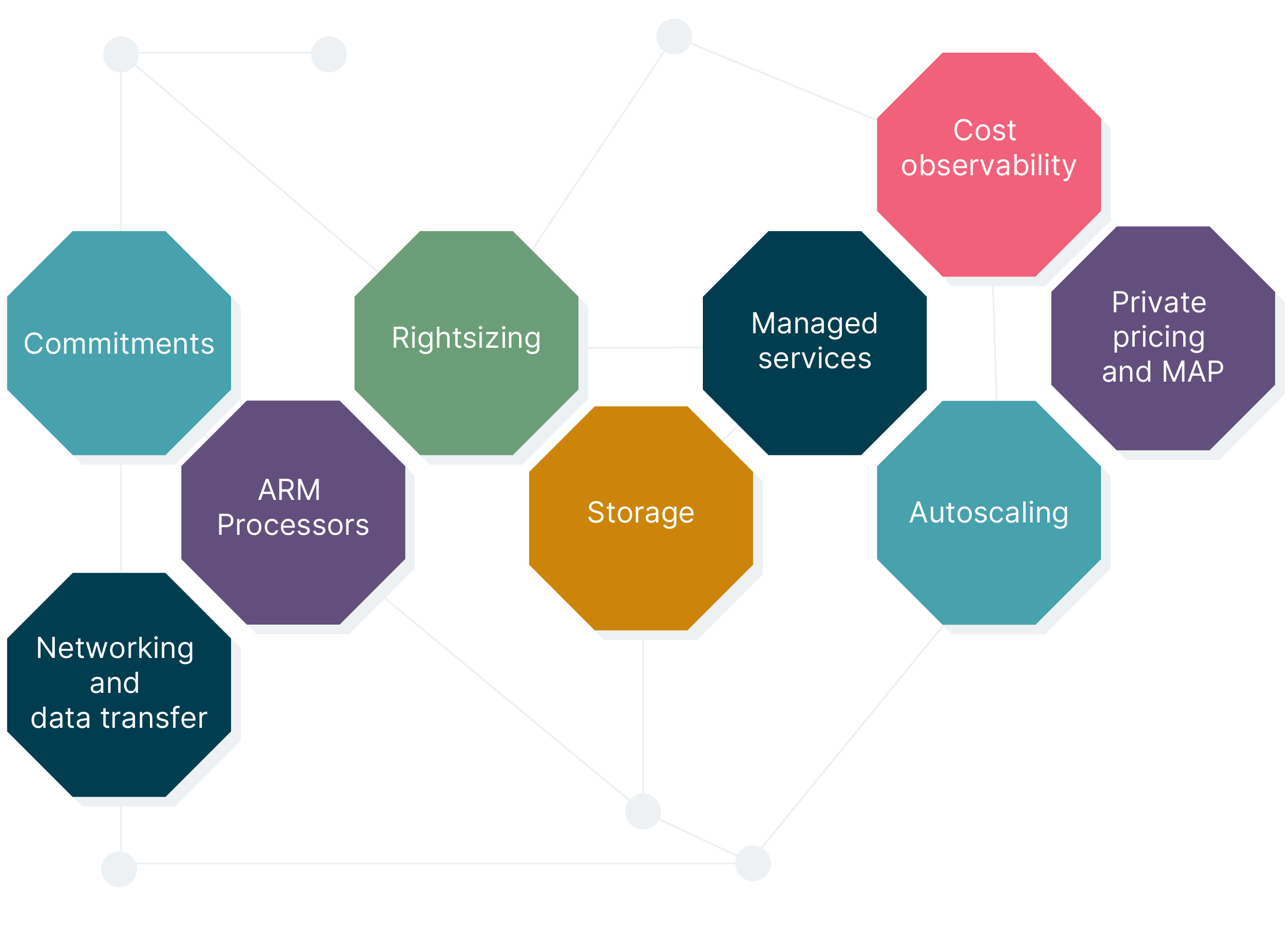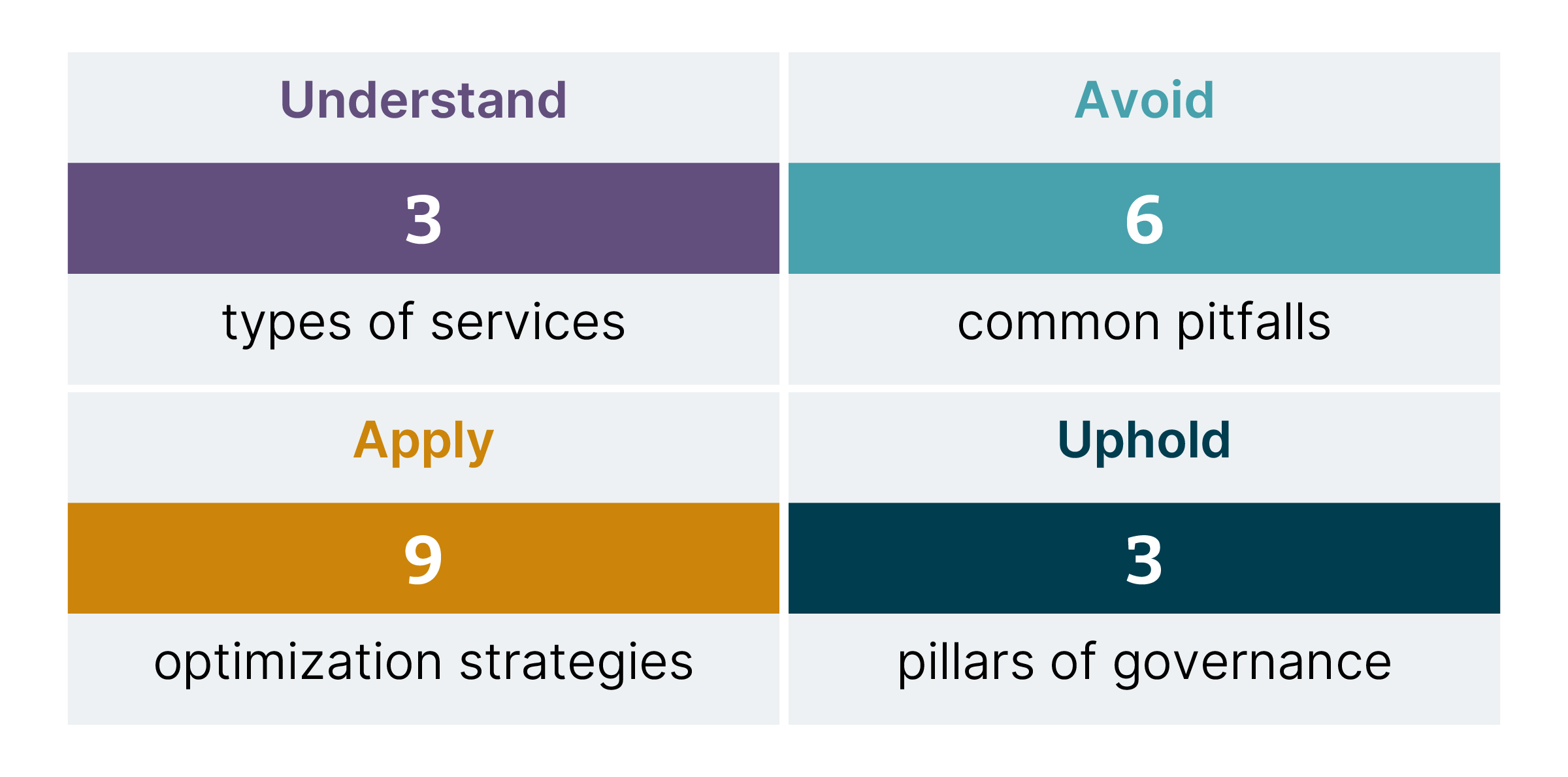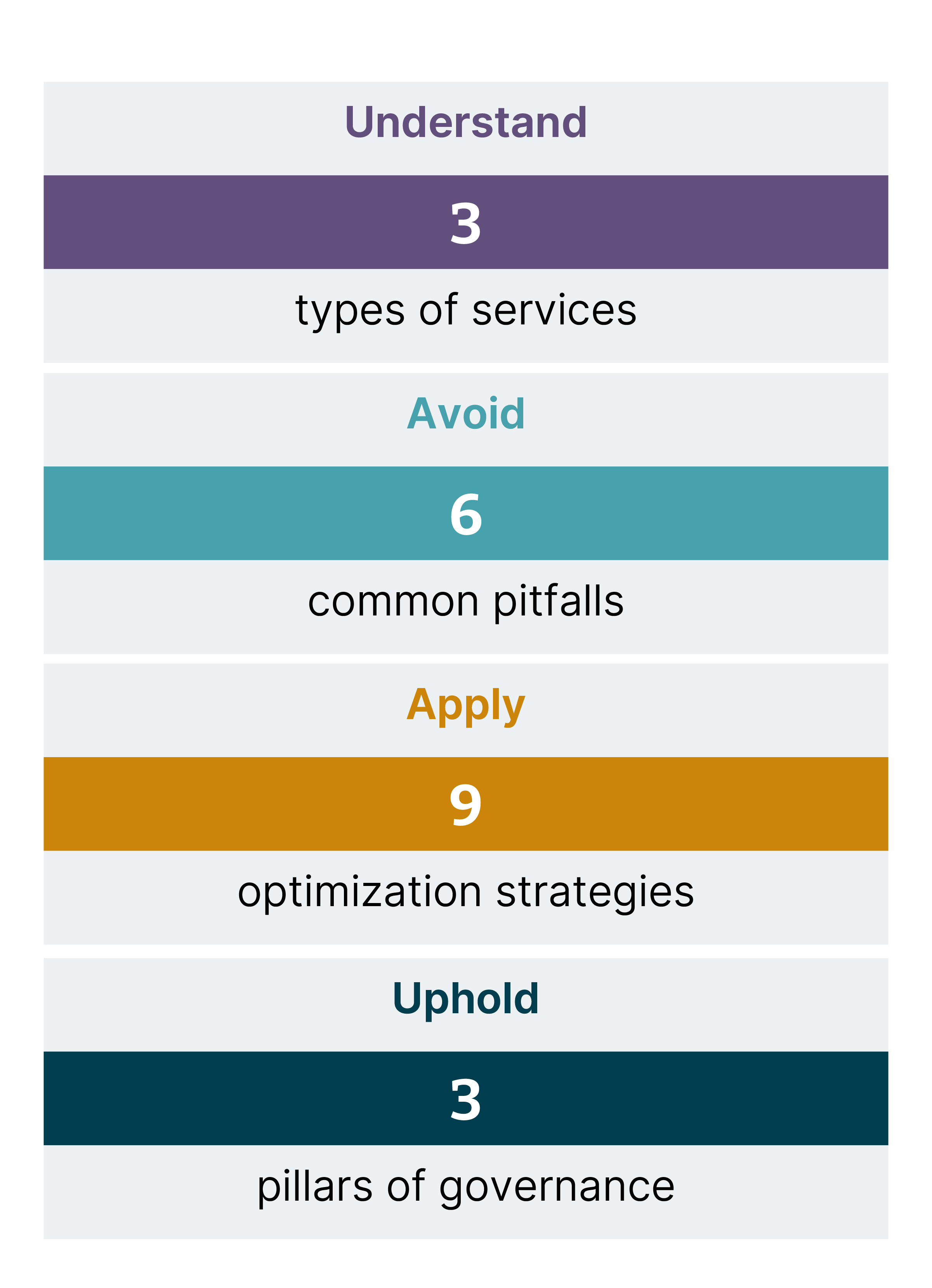In today’s digital landscape, the cloud has emerged as a vital asset for businesses, offering scalability, agility and reduced operational overhead. As enterprises increasingly adopt cloud services, managing cloud costs becomes crucial. Without careful oversight, uncontrolled spending can lead to financial instability, hindering business growth.
As cloud adoption continues to surge, managing cloud costs becomes the cornerstone of a successful and sustainable cloud strategy for large enterprises. By implementing robust cloud cost controls, large enterprises can leverage the benefits of cloud computing while avoiding the pitfalls of financial mismanagement.
To kick off this discussion, let’s explore the different types of cloud services and their trade-offs.
Types of cloud services
Achieving a specific deployment goal on the cloud involves selecting from various available services. These cloud services can be broadly categorized into three types, offering flexibility in deploying workloads.
The best choice for your organization depends on many parameters, including application requirements, project timeline, in-house skills in managing operations, usage patterns and cost structure. Therefore it is important to understand cloud service offerings and the trade-offs across all three types — self-hosted infrastructure, managed services and serverless services.


A well-defined cloud service catalog with sensible defaults and best practices documentation is a fundamental component of a successful cloud operating model.
Common beginner mistakes
The cloud offers significant flexibility and scalability, but it can also lead to unexpected costs if not managed properly. Many organizations, particularly those new to cloud adoption, often encounter common pitfalls that lead to unexpected costs and challenges and frustration during the transition.


Common challenges include overprovisioning for peak loads, neglecting dynamic scaling, overlooking network data transfer costs and neglecting observability and support expenses. The experimental nature of cloud computing can lead to unintended costs due to prolonged or never-ending experiments, while transitioning from manual on-premises processes to fully automated cloud infrastructure requires a shift in mindset and coding skills, which can be difficult for large organizations.
By being mindful of these common pitfalls and implementing best practices, you can significantly reduce your cloud costs and maximize the value of your cloud investment.
Key cloud cost optimization strategies
Drawing from our experience working with numerous large enterprises, we've developed a set of cloud cost optimization strategies designed to maximize cloud efficiency and minimize expenses.


Purchase commitments such as Savings Plans and Reserved Instances in AWS for consistent workloads to receive significant discounts (30-50%) on compute costs. Feel free to start conservatively and gradually increase commitments as needed. Regularly review and adjust commitments based on usage patterns.
Rightsize infrastructure by identifying and scaling down underutilized resources to eliminate waste, and continuously monitoring resource utilization (e.g. CPU, memory, storage, network) to identify optimization opportunities.
To leverage elasticity and the on-demand nature of cloud computing, automatically adjust (autoscale) the number of instances based on predefined metrics (CPU and memory utilization, API requests) to meet fluctuating demand like peak load.
Leveraging ARM processors (Graviton in AWS) over Intel processors provides better price for performance for general-purpose workloads, as they are energy efficient and better for sustainability initiatives. Ensure workload compatibility with ARM architecture before migration.
Storage is low cost in cloud, however as with many options, choosing the right fit for purpose is key. Prioritize using cost-effective storage options, and unless absolutely essential for specific high-performance workloads, avoid using more expensive storage types such as io1/io2. To optimize data storage costs, implement automated policies to move data to the most cost-effective storage tier based on its usage patterns.
Managed services for Kubernetes (EKS), Kafka (MSK) are the new norm as they reduce operation overheads. However, it is important to understand pricing models, as rightsizing managed services infrastructure is critical to cost optimization. Leverage commitment based savings such as Reserved Instances and Graviton processors to further optimize managed service costs.
For network and data transfer costs, understanding the purpose and charges associated with different networking components is key to avoid unnecessary costs. Assess the trade-off between increased availability and additional costs when implementing a multi-AZ or multi-region architecture.
Utilize Migration Acceleration Programs (MAP) for one-time migration benefits during initial cloud adoption. Explore Private Pricing Agreements (PPAs) for high-volume, long-term cloud users to receive significant discounts.
With real-time cost observability dashboards and better insights into cost trends, resource utilization, and anomalies application, your teams will be empowered to do proactive cost management.
Pillars of effective cloud governance
Cloud governance is essential for organizations to ensure that their cloud infrastructure is used effectively, securely and efficiently. The following three pillars of cloud governance are aligned with the three phases of the FinOps framework.


Provide real-time insights through dashboards showing cost, utilization and performance data across applications, environments and services, empowering teams to understand resource health and spending patterns.
Invest in a self-service platform for infrastructure provisioning and configuration, allowing teams to operate efficiently without manual intervention.
Shift governance "left" by making cost optimization processes part of the development lifecycle and empowering application teams to make their own decisions.
This approach ensures informed decision-making, efficient operations and ongoing optimization for a cost-effective and secure cloud environment.
In summary
The cloud landscape constantly shifts, with new services and best practices continuously emerging. To stay ahead of the curve, it's crucial to stay on top of these advancements, including their cost structures. By embracing optimization and service migration as a continuous practice, organizations can leverage the numerous benefits the cloud offers and gain a competitive edge.


The cloud is transforming how businesses operate, requiring enterprises to adapt to a new model for consuming and managing infrastructure resources.















